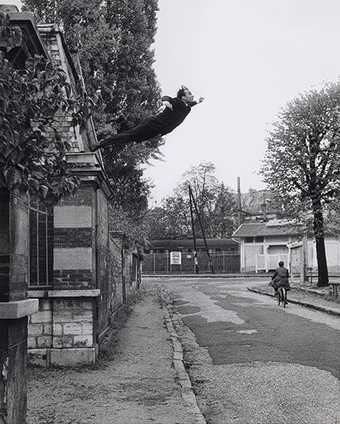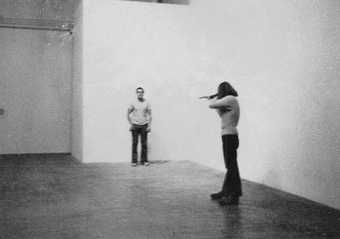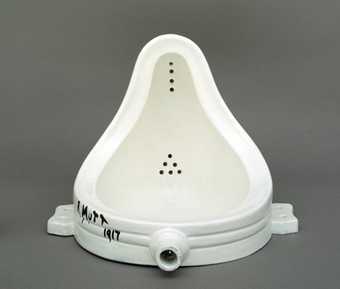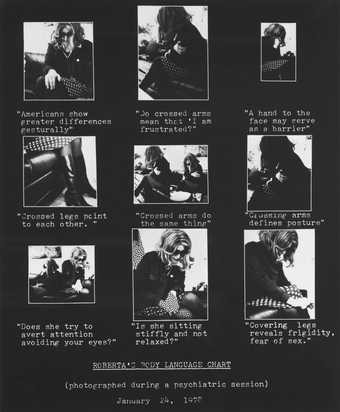It might at first sound odd to posit performance as a medium, given that we normally think of it as resolutely ephemeral. But thinking about performance in relation to media has always been part of how critics and scholars have dealt with its forms, even and especially when making the strongest cases for its inevitable evanescence.
In 1993 Peggy Phelan wrote that ‘Performance’s only life is in the present’; that it ‘cannot be saved, recorded, documented, or otherwise participate in the circulation of representations of representations: once it does so it becomes something other than performance’.1 For Phelan, a work of performance art only exists as long as the exact duration of its staging. Repeat performances comprise entirely different works, and any documentation – any translation into mediated forms – can only retrospectively gesture toward that which once was, but is no more. Phelan draws this ontological line in the sand because, for her, the value of performance lies in its disappearance: ‘Without a copy, live performance plunges into visibility – in a maniacally charged present – and disappears into memory, into the realm of invisibility and the unconscious where it eludes regulation and control’.2 Because it vanishes, performance has the power to short-circuit the normal functioning of the art market’s profit-motive and to escape the power of mastering narratives.
In Phelan’s account, performance’s identity and its attendant capacities are secured through a negative relation to media. Performance is not a photograph, not a video, not a subsequent written account, not even the aggregate of memories stemming from the act since these, too, only represent partial approaches to the thing itself – just rippling waves generated by, but not identical to, the stoniness of the stone now forever submerged beneath its own glistening traces. For her, performance is the art form that is not one, that which exceeds the photograph, that which evades the video, and so on. Performance is raw immediacy.

Fig.1
Yves Klein
Leap into the Void 1960
© Yves Klein, ADAGP, Paris
Photo: Shunk–Kender, courtesy Roy Lichtenstein Foundation
Philip Auslander has adopted a diametrically opposite view of this relationship. For him, mediation is what creates performance in the first place. In 2006 he wrote, ‘Documentation does not simply generate image/statements that describe an autonomous performance and state that it occurred: it produces an event as a performance’.3 That is, those formerly inadequate and obscuring ripples can now be understood not only to describe the size, speed and trajectory of the stone that created them, nor merely to prove and attest that there was a stone that struck the water, but to draw our attention to the event as something significant, something worthy of our attention because it has left its mark on the world and our experience of it. Auslander demonstrates the might of this ex post facto production by describing works that never happened in the way they are portrayed – performances that exist solely as works of mediation.
He focuses on artist Yves Klein’s famously confabulated photograph, Leap into the Void 1960 (fig.1). This black-and-white image captures Klein in full body profile and in the middle-distance (from the standpoint of the camera) as he takes a swan dive from a two-story building, frozen at the height of his arc before the impending plummet to the sidewalk below. When it was staged, a group of people on the street were waiting with a net to catch him. In the final collaged image that circulates as Leap into the Void, however, this practical precaution has been carefully excised, another view of the unforgiving and un-peopled ground standing in for those open arms. As Auslander puts it, ‘The image we see thus records an event that never took place except in the photograph itself’.4 Even so, he argues, Leap is no less a performance for never having happened. In Auslander’s view, the photograph makes the performance – not only ratifying it, but typifying it and calling it into being as an action intended for consideration by an audience. It is the photograph that creates the performance, and continually creates it every time someone sees the image. Here, whatever is alive in performance is initiated through its mediation.

Fig.2
Chris Burden
Shoot 1971
© Chris Burden
Auslander confronts the ghost of Phelan’s negative ontology that haunts his intervention by comparing Klein’s Leap to Chris Burden’s equally iconic Shoot 1971, which also purports to present a fleeting action in photography (fig.2). For Shoot, Burden had himself shot in the arm by a marksman armed with a rifle. Photographs capture the tense moment before the bullet is loosed – the shooter ready and aiming as Burden stands against a blank white studio wall – as well as the immediate aftermath – the artist walking across the studio, snapshot taken from his left side so the .22 caliber through-and-through on his tricep and its telltale trickle of blood are in prominent evidence. Polemically, Auslander asks:
What difference does the fact that the image of Chris Burden documents something that really happened and the image of Yves Klein does not make to our understanding of these images in relation to the concept of performance documentation? My answer: If we are concerned with the historical constitution of these events as performances, it makes no difference at all.5
Auslander divorces the facticity of depicted events from the reality effect produced by their ultimate forms – it looks like Klein jumps recklessly, just as it looks like Burden got shot. For him, that effect is the location of performance. Auslander concludes, ‘It may well be that our sense of the presence, power, and authenticity of these pieces derives not from treating the document as an indexical access point to a past event but from perceiving the document itself as a performance that directly reflects an artist’s aesthetic project or sensibility and for which we are now the present audience’.6 Such a thought experiment washes away layers of accrued anxiety over coming to performance(s) too late.
But you do not have to be Peggy Phelan to see that this notion of performance as a mediated artifact, one that ‘reflects an artist’s aesthetic project’, forfeits any and all claims to its being different from any kind of art whatsoever. Is this not true of all photography, film, painting, sculpture, and so on, produced since the advent of the concepts ‘art’ and ‘artist’ (at least in terms of the western disciplinary language of art history)? Phelan effaces any significant connection between performance and its traces while Auslander elides any difference between action and artifact. The shared result of each of these attempts to define performance is to posit it as a sovereign category, yet make it unknowable. For Phelan, this is the stated aim – the stone is lost to the water – but for Auslander this erasure is an unintended (and ironic) consequence – we encounter an infinite homogeneous surface, every undulation like any other. For all the verbiage invested, we do not know performance any better.
Surely there must be a space between these two antipodes, a terrain on which we could sensitively draw out how performance relates to its media while respecting distinctions. In 1965 artist Dick Higgins used the term ‘intermedium’ to describe then-new works of art that he understood ‘to fall between media’.7 He was talking about Happenings, which the essay described as ‘an uncharted land that lies between collage, music, and the theater’, but also about Rauschenberg’s combines, Oldenburg’s soft sculptures, and goings-on at Judson Dance, among other examples.8 For Higgins, this transgression of art’s traditional lines echoed the day’s social unrest. The notion of a ‘pure medium’ could no longer hold when ‘Castro work[ed] in the cane fields’ and ‘New York’s Mayor Lindsay walk[ed] to work during the subway strike’.9 With such an equation between art’s taking flight from medium specificity and the seeming signs of a reorganisation of society in mind, it is all the more baffling to confront the later desire to pinpoint and protect performance’s ontology, its medium identity, in the name of securing its radical potential. Despite his sense that the mode of intermediality signaled an epochal shift in art production, Higgins insists that the concept can only offer a starting point for further analysis and understanding: ‘it allows for an ingress to a work which otherwise seems opaque and impenetrable, but once that ingress has been made it is no longer useful to harp upon the intermediality of a work’.10 Starting from the realisation that artworks can comprise intermedia, one must then proceed to interrogate which media are being intermingled and why.
This idea can bring us some distance in approaching (with specificity, rather than flattening equality) the cases Auslander raises. For example, thinking in intermedial terms could mean conceiving Leap in relation to collage and Shoot in relation to photojournalism. Pulling the works apart in this way would set us on track to appreciating their differences, why it matters historically and aesthetically that one image corresponds more closely to a factic experience of lived reality than the other. We still run into a dead end, however, so long as we imagine either of these – collage or photojournalism – to be mixed, or ‘intermedialised’, with performance. For, doing so still presumes performance to be a sovereign category; this presumption preserves the initial binary terms of the documentation problematic as Phelan lays it out: performance (as action) on one hand; documentation on the other. As soon as we attempt to draw distinctions between the performances based on how they make use of media, we end up separating action from artifact and, thus, right back where we started.
To think through performance’s relation to media (without losing either term to the other’s priority), it is imperative to imagine an intermedium that does not merely combine already identifiable, discrete artistic media (even if it changes them into some other art form greater than the sum of its parts) but that also bridges the space of art with activities, actions, and processes imagined to be beyond its purview – i.e., the space of life, things not yet framed by artistic discourse and practice, but which can be brought within it. This is already to some extent what Higgins had in mind with the examples he chooses, but he points directly at this problem by mentioning Marcel Duchamp. He writes, ‘The ready-made or found object, in a sense an intermedium since it is not intended to conform to the pure medium … suggests a location between the general area of art media and those of life media’.11 This location is the space between Phelan and Auslander, and it is this blurry inter-zone between ‘art media’ and ‘life media’ that must be our point of departure in considering the relationship between action and mediation in performance.

Fig.3
Marcel Duchamp
Fountain 1917, replica 1964
© Succession Marcel Duchamp/ADAGP, Paris and DACS, London 2002
The readymade is usually thought of as an object lesson in radical dislocation, a disjunctive leap across unlike spaces – take a urinal, remove it from the bathroom (or hardware store), put it in a gallery, title it and it becomes Fountain (fig.3). But the idea of intermediality (as bringing together ‘art media’ and ‘life media’) suggests we should see the readymade as an act of spatial compression instead, the production of a kind of wormhole that brings these two formerly distant places infinitely close together, as opposed to a definitive cleavage that separates them. Indeed, this production of proximity explains much better why Fountain was capable of disgusting its first audiences (and still is in every classroom in which I have ever taught). The object never stops being a urinal but it also becomes sculpture, meaning it simultaneously is and is not a urinal.
This infinitesimal, vibrating, uncertain distance is what Duchamp called the ‘inframince’, usually translated as ‘infrathin’ – too thin to be thin, or even more thin than thin. His examples include the warmth felt on the seat of a chair just after someone gets up from it and the space between the front and back sides of a sheet of paper. We experience the infrathin when ‘tobacco smoke exhaled also smells of the mouth which exhales it’, or when we view an image painted on glass from the non-painted side.12 The two elements – smoke and breath, or glass and paint – remain intelligible, perceptible, but where one stops and the other starts is unidentifiable, too fine to grasp.
Performance brings art media and life media together along an infrathin edge. This means that when we consider performance and media, we should not lament the irretrievable loss of the stone, or erase its distinction from the watery surround, but rather concentrate on the threshold moment between its being dry and being wet. That kissing spatial plane, that temporal membrane, is performance as a medium. It is an infrathin comingling of media – what we could call an inframedium. To focus on the threshold this way is, pace Phelan and Auslander, to imagine performance less as a thing in itself (whether located in an action or its traces) and more as a spatial situation, as a mobile and profoundly indistinct dividing line that joins form to experience and, by virtue of its specific siting in a given work, describes the location and composition of each.
As Fountain is both a urinal and a sculpture, so Leap into the Void is both an act of faith and a controlled manipulation of form. It matters equally that Klein jumped from the building and that he did so conceiving in advance that the final product would be a collaged photograph. The image is designed to set the border between live action and crystallised form buzzing. And it treats his body and photography as media capable, when combined, of producing an artwork that affords a glimpse of transcendence. Along with Auslander, we would have to say that in this regard Leap reflects Klein’s ‘aesthetic project’. A canvas saturated with impastoed International Klein Blue delivers the same momentary defiance of gravity, as the experience of vision seems to dance free from its corporeal anchor. But by using his own body (for once) to achieve this effect Klein asks his viewers to see, additionally, how such a yearning can only ever be expressed through form, how the search for the impossible and inexpressible is conducted precisely through what we can do and make. Leap makes spirit chafe against flesh; the infrathin line that unites and divides the two is where the performance happens.
Likewise, Shoot is both an act of self-sacrifice and a calculated presentation of artistic mastery. It is crucial to the work that Burden really did get shot, and it is equally important that the photographs convey this action in the way they do. The flight of the bullet mimics the instantaneity of live action as Phelan would see it, and the photographic strategy of capturing the moments just before and after Burden gets hit heightens our apprehension of Shoot’s brief passage in time. The photographs conspire to amplify the ephemerality, presenting it again and again to new audiences. In these ways, again, Phelan and Auslander are each right to some extent. But the point is to think both of these moments together as comprising performance. It is worth mentioning, moreover, that one of Duchamp’s many examples of the infrathin is the moment between hearing a pistol fire and seeing its target pierced. The infrathin seam that joins signified and signifier is what the perceiving audience encounters. With Shoot, we confront the place where violence becomes an object of consumption. Art historian Kathy O’Dell has argued that this piece (and other examples of what she describes as masochistic body art of the 1970s) should be seen in relation to their contemporaneous televisual environment, which featured the first ever real-time images of combat as news coverage of the Vietnam War beamed its way into American homes.13 Shoot was not only designed to be photographed, but was mediated in advance in being a response to such televised footage (and its having already married life media with art media).
Performance happens at the threshold of action and image. That place is impossible to identify definitively, to cordon or sequester, and this is why even the most sophisticated attempts to define performance as a thing in itself end up either submerging it beneath unknowable depths or conflating it with the forms with which it travels. But approaching performance as an inframedium offers a generative method for exploring works that might at first seem ‘opaque and impenetrable’, as Higgins puts it. We need to worry less about the time of performance and whether it was then or now or always, and think more about where it happens, what it brings together and how that spatial situation both questions and describes our own vantage onto the nexus of art and life.


